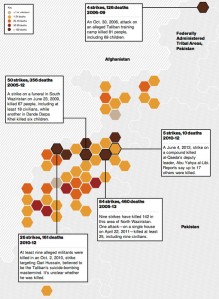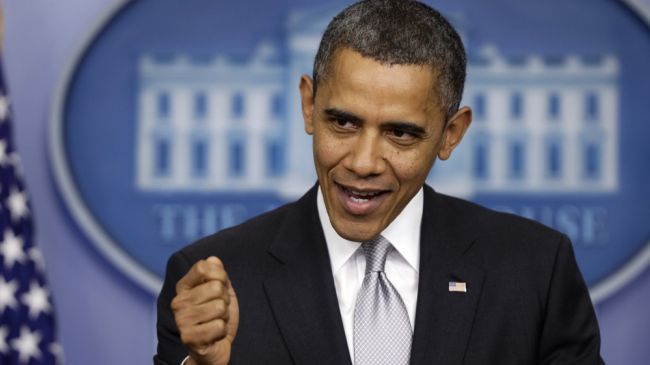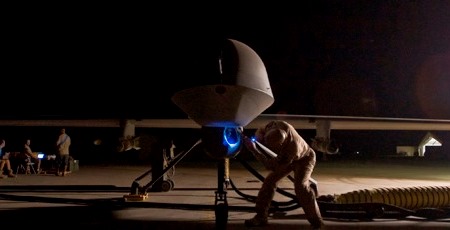 This week, former president, activist, and “father of the nation” Nelson Mandela died in his home in Houghton, Johannesburg. Having spent the last few years battling with failing health, he finally succumbed to a lung infection and passed away, surrounded by his family. He was 95 years of age, and his life and accomplishments reach far beyond the nation that considered him its mentor, leader, and father figure.
This week, former president, activist, and “father of the nation” Nelson Mandela died in his home in Houghton, Johannesburg. Having spent the last few years battling with failing health, he finally succumbed to a lung infection and passed away, surrounded by his family. He was 95 years of age, and his life and accomplishments reach far beyond the nation that considered him its mentor, leader, and father figure.
Today, in response to the news of his passing, President Zuma has announced a national mourning period of ten days, with the main event being an official memorial service to be held at the FNB Stadium in Johannesburg on December 10th, 2013. Mandela’s body will lie in state from the December 11th to 13th at the Union Buildings in Pretoria and a state funeral will be held on December 15th.
 As current President Jacob Zuma said today of South Africa’s founding President, he was an:
As current President Jacob Zuma said today of South Africa’s founding President, he was an:
international icon who was a symbol of reconciliation … love, human rights and justice in our country and to the world. The outpouring of love … illustrates the caliber of leader that Madiba was …, The week of mourning will also celebrate a life well lived.
Mandela’s grandson, Mandla Mandela, said he was strengthened by the knowledge that his grandfather was finally resting. He also said that the late statesman was the embodiment of strength, struggle and survival. As a grandfather, Mandela would always be remembered as kind-hearted, generous and wise. Mandla also expressed gratitude for the national and international support his family had received during Mandela’s long health problems.
 In a statement, the grandson of the elder statesman said the following:
In a statement, the grandson of the elder statesman said the following:
All that I can do is thank God that I had a grandfather who loved and guided all of us in the family. The best lesson that he taught all of us was the need for us to be prepared to be of service to our people… We in the family recognize that Madiba belongs not only to us but to the entire world. The messages we have received since last night have heartened and overwhelmed us.
Zelda la Grange, Mandela’s personal assistant for almost two decades, said the elder statesman inspired people to forgive, reconcile, care, be selfless, tolerant and to maintain dignity no matter what the circumstances. She said in a statement:
His legacy will not only live on in everything that has been named after him, the books, the images, the movies. It will live on in how we feel when we hear his name, the respect and love, the unity he inspired in us as a country, but particularly how we relate to one another.
 In a church service in Cape Town, retired archbishop Desmond Tutu – another major South African activist and humanitarian who embodies the spirit of reconciliation and tolerance – said the anti-apartheid leader who became South Africa’s first black president would want South Africans themselves to be his “memorial” by adhering to the values of unity and democracy that he embodied.
In a church service in Cape Town, retired archbishop Desmond Tutu – another major South African activist and humanitarian who embodies the spirit of reconciliation and tolerance – said the anti-apartheid leader who became South Africa’s first black president would want South Africans themselves to be his “memorial” by adhering to the values of unity and democracy that he embodied.
Recalling how Mandela helped unite South Africa as it dismantled apartheid, and prepared for all-race elections in 1994, Tutu said that: “All of us here in many ways amazed the world, a world that was expecting us to be devastated by a racial conflagration.” In closing his prayer, Tutu said: “God, thank-you for the gift of Madiba.” Mourners also gathered outside Mandela’s former home on Vilakazi Street in the city’s black township of Soweto.
 Also speaking of Mandela’s legacy was F.W. de Klerk, South Africa’s last apartheid-era president who negotiated an end to apartheid with Mandela. By finding common cause in often tense circumstances, the two men shared the Nobel Peace Prize in 1993. In summarizing Mandela’s legacy, de Klerk told eNCA television: “Never and never again should there be in South Africa the suppression of anyone by another.”
Also speaking of Mandela’s legacy was F.W. de Klerk, South Africa’s last apartheid-era president who negotiated an end to apartheid with Mandela. By finding common cause in often tense circumstances, the two men shared the Nobel Peace Prize in 1993. In summarizing Mandela’s legacy, de Klerk told eNCA television: “Never and never again should there be in South Africa the suppression of anyone by another.”
Helen Zille, leader of the country’s official opposition party, the Democratic Alliance, and premier of the Western Cape, the only province not controlled by the ANC, commented:
We all belong to the South African family — and we owe that sense of belonging to Madiba. That is his legacy. It is why there is an unparalleled outpouring of national grief at his passing. It is commensurate with the contribution he made to our country.
 Mandela leaves behind a legacy that is virtually unparalleled in modern history, comparable only to Martin Luther King Jr. and Mohandas Gandhi. Also known as “Madiba” – a clan name that is considered of greater importance than a surname in Mandela’s ancestral Xhosa culture – Mandela was not South Africa’s first black President, but the first man to be elected in a fully representative election.
Mandela leaves behind a legacy that is virtually unparalleled in modern history, comparable only to Martin Luther King Jr. and Mohandas Gandhi. Also known as “Madiba” – a clan name that is considered of greater importance than a surname in Mandela’s ancestral Xhosa culture – Mandela was not South Africa’s first black President, but the first man to be elected in a fully representative election.
Having spent his life fighting against Apartheid, Mandela’s also spent his time as President – from 1994 to 1999 – focusing on dismantling the legacy of apartheid through tackling institutionalized racism, poverty and inequality, and fostering racial reconciliation. From 1991 to 1997, he also served as President of the African National Congress (ANC) and was the Secretary General of the Non-Aligned Movement – a group of states not aligned to any specific power bloc – from 1998 to 1999.
 But what is especially poignant and significant about Mandela’s life is the fact that from 1964 to 1990 (a period of 27 years) he conducted his campaign for reform and racial inclusion from a prison cell. After being arrested for high treason against the government. This was the culmination of many years of agitation and resistance against a government that was becoming increasingly racist and authoritarian, and opposed to the winds of change that had been blowing through the country for years.
But what is especially poignant and significant about Mandela’s life is the fact that from 1964 to 1990 (a period of 27 years) he conducted his campaign for reform and racial inclusion from a prison cell. After being arrested for high treason against the government. This was the culmination of many years of agitation and resistance against a government that was becoming increasingly racist and authoritarian, and opposed to the winds of change that had been blowing through the country for years.
Due to his involvement with the ANC and the organization’s adoption of increasingly militant tactics in order to fight against the Nationalist pro-apartheid government, and its institution of martial law, Mandela was convicted of sabotage and conspiracy to overthrow the government and made one of his famous “I am prepared to die” speech (inspired by Castro’s “History will absolve me” speech):
During my lifetime I have dedicated myself to this struggle of the African people. I have fought against white domination, and I have fought against black domination. I have cherished the ideal of a democratic and free society in which all persons live together in harmony and with equal opportunities. It is an ideal which I hope to live for and to achieve. But if needs be, it is an ideal for which I am prepared to die.
Despite official censorship, this speech and the trial proceedings were broadcast around the world and numerous organizations – including the United Nations and the Word Peace Council – petitioned the South African government for clemency. These were ignored, and Mandela spent the next 27 years in a series of prisons before finally being released in 1990.
 Upon his release, Mandela went back to advocating against apartheid and found a willing partner in President F.W. de Klerk. Together, and over the course of three years from 1990 to 1993, they dismantled the racialist apparatus of power installed by the Nationalist Party and opened up the franchise to all South Africans. In the 1994 General Election, the first free and open election in South Africa’s history, Mandela ran and won, becoming the first black president in the country’s history.
Upon his release, Mandela went back to advocating against apartheid and found a willing partner in President F.W. de Klerk. Together, and over the course of three years from 1990 to 1993, they dismantled the racialist apparatus of power installed by the Nationalist Party and opened up the franchise to all South Africans. In the 1994 General Election, the first free and open election in South Africa’s history, Mandela ran and won, becoming the first black president in the country’s history.
And despite what many observers and angry Afrikaners believed, that the election of a black president would signal a race war, Mandela presided over a period of peace and reconciliation between all of the nation’s people. Though the transition was not easy and there were bumps along the way, the next five years were marked overwhelmingly by progress and optimism as the country moved towards a truly free and open state.
 From all this, Nelson Rolihlahla “Madiba” Mandela has forever been known as a man who defied the odds and remained stalwart in his commitment to improve the lives of his people, regardless of their race, creed, ethnicity, or background. In response to his passing, the Nelson Mandela Foundation – a charity devoted to social justice, peace, human rights and democracy – posted the following message on its website:
From all this, Nelson Rolihlahla “Madiba” Mandela has forever been known as a man who defied the odds and remained stalwart in his commitment to improve the lives of his people, regardless of their race, creed, ethnicity, or background. In response to his passing, the Nelson Mandela Foundation – a charity devoted to social justice, peace, human rights and democracy – posted the following message on its website:
It is with the deepest regret that we have learned of the passing of our founder, Nelson Rolihlahla Mandela – Madiba. The Presidency of the Republic of South Africa will shortly make further official announcements.
We want to express our sadness at this time. No words can adequately describe this enormous loss to our nation and to the world.
We give thanks for his life, his leadership, his devotion to humanity and humanitarian causes. We salute our friend, colleague and comrade and thank him for his sacrifices for our freedom. The three charitable organisations that he created dedicate ourselves to continue promoting his extraordinary legacy.
Many world leaders are expected to converge on South Africa to witness the funeral of this elder statesman and advocate for peace and human rights, amongst them President Barack Obama and Canadian Prime Minister Stephen Harper. They will be joined by people from all over the world who will bear witness to the passing of a man who is sure to be remembered as one of history’s greatest.
Rest in peace Madiba. The world was made better because of your time within it. And we could sure use more people like you as we step into the future!
Sources: cbc.ca, (2), nelsonmandela.org, businessinsider.com
















